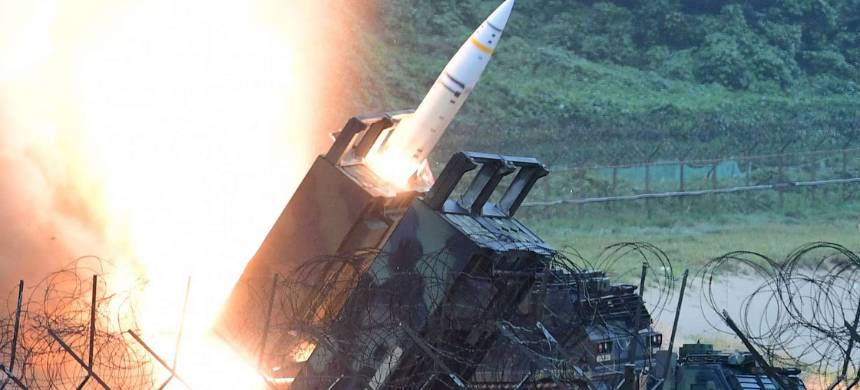Ukraine Deploys U.S.-Supplied ATACMS Missiles in Escalated Conflict with Russia
On the 1,000th day of the war, Ukraine marked a significant escalation by deploying U.S.-supplied ATACMS (Army Tactical Missile Systems) to strike Russian military sites. This comes shortly after the Biden administration authorized Ukraine to use long-range weapons for operations inside Russian territory.
Details of the Attack
The strikes targeted a military facility in Russia’s Bryansk region, approximately 110 km from Ukraine. Moscow reported that its air defense systems intercepted five of the six missiles, with debris causing a minor fire but no casualties or significant damage.
Ukraine, however, claimed a more impactful result, stating that it struck an arms depot, triggering secondary explosions. While Kyiv has not officially confirmed the use of ATACMS, U.S. and Ukrainian officials have verified their deployment. The U.S. indicated that two of the eight missiles fired during the operation were intercepted.
Russia’s Reaction
Russian Foreign Minister Sergey Lavrov condemned the move, describing it as evidence of Western intent to escalate the war. Lavrov also alleged that the missiles required U.S. operational support, effectively implicating Washington as a direct participant in the conflict.
On the same day, Russian President Vladimir Putin signed a revised nuclear doctrine, lowering the threshold for using nuclear weapons to include any attacks threatening Russia’s territorial integrity. The U.S. dismissed this as “irresponsible rhetoric.”
Read more: MoneyGram Suffers Cyberattack Compromising Sensitive Customer Data
Drone Attacks and Broader Escalation
In addition to the missile strikes, Russia reported destroying 42 Ukrainian drones in multiple regions, including 32 in Bryansk. This large-scale drone activity was noted as unusual, signaling further intensification of hostilities.
At the United Nations, Ukraine’s Ambassador Sergiy Kyslytsya reaffirmed global condemnation of Russia’s annexation of Ukrainian territories, emphasizing the need for international unity.
Human and Military Toll
The human cost of the conflict remains staggering, with over 12,000 civilians killed and nearly 27,000 injured, according to U.N. figures. Millions of Ukrainians remain displaced, reducing the country’s population by a quarter.
Military casualties are equally heavy, with Western estimates suggesting hundreds of thousands of soldiers killed or wounded on both sides.
Western Support and Geopolitical Shifts
Ukraine continues to rely on Western support, as Denmark recently announced a $138 million arms donation, and the U.S. approved a $100 million military equipment sale. However, uncertainty looms with the upcoming U.S. administration under President-elect Donald Trump, who has criticized extensive aid to Kyiv and hinted at prioritizing peace talks.
Outlook
Ukrainian President Volodymyr Zelenskyy called for diplomatic efforts to end the war within the next year, framing the conflict as a battle between freedom and dictatorship.
While Ukraine demands a full withdrawal of Russian forces and the restoration of its territorial integrity, Moscow insists on Kyiv abandoning NATO aspirations and recognizing its annexations. With winter approaching, intensified aerial campaigns and trench warfare in eastern Ukraine show that the war remains far from resolution.











